Easter Lilies
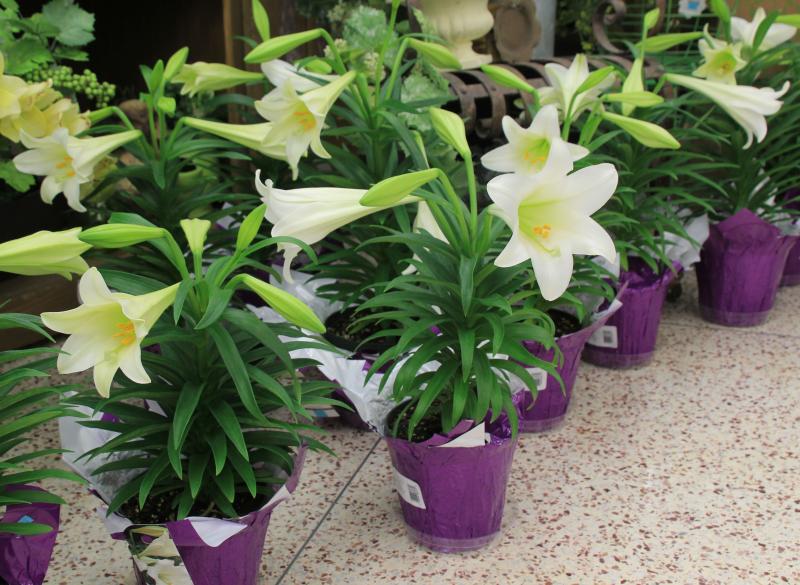
Easter lilies are a very popular holiday plant that is generally only available in the week or two before Easter each year. They are enjoyed by many for their lovely white blooms, sweet fragrance and the symbolism that they hold for the Easter holiday. A nice sized plant should have at least five flowers and might have as many as nine or ten. Each flower will last for a few days, depending on the temperature. Flowers will last longer in cool locations but tend to mature and wither more quickly in a warmer location.
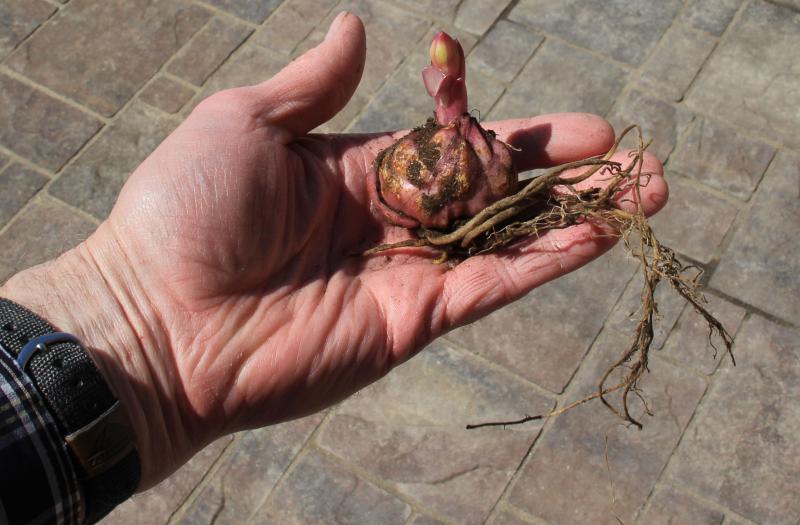
Post-Easter Care
So, what do you do with the plants after the flowers have faded? The easiest answer is to just put it in your compost pile after it is done blooming. However, you can keep the plant alive for a long time if you give them a little extra care. First, cut back the old flower branches so you remove them right above the upper leaves. Keep the plant in a sunny window and water it when the soil gets dry. Give it some houseplant fertilizer every couple weeks to help it continue to grow and stay healthy. Then, when it finally warms up in the spring you can actually plant your Easter lily out in your garden or flower bed. Dig a large enough hole that will accommodate the whole root ball. You can even make the hole a little deeper to give your lily a better chance of making it through the winter. Choose a sunny location that has well-drained soil. Don’t pick a spot where water usually stands after a heavy rain or the bulbs may rot. Your lily won’t bloom again this year but you should notice the plant starting to grow the next year, usually in late spring. No, it won’t make it for Easter again, but you will still get to enjoy those same bright white, fragrant flowers, probably sometime in July.
Garden Lily Varieties
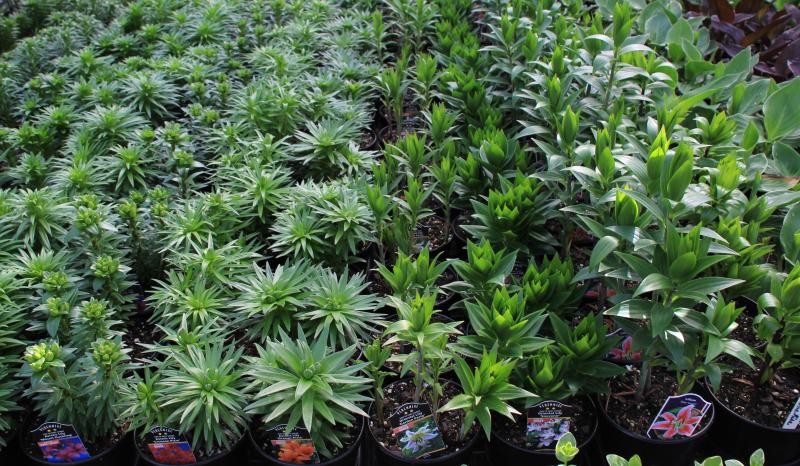
If you really like lilies, there are many different kinds that you can plant in your own garden. You may find some of these lilies sold in your local florist’s shop as flowering potted plants for Mother’s Day or you can often find them in garden centers and discount outlet stores. You will also see many different kinds of lily bulbs available in local stores, on the internet, or mail order for direct planting into your garden. There are many different types of lilies that vary in height, flower color and fragrance. Once planted in a good location they can provide many years of enjoyment.
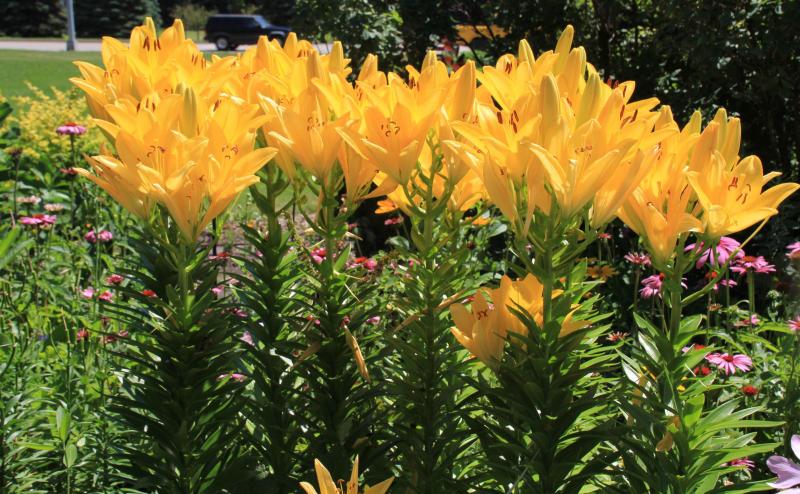
LA Hybrids & Asiatic
LA hybrids are a relatively new type of lily. These are actually a cross between the Easter lily (Lilium longiflorum) and the Asiatic lilies (Lilium asiatica). The LA name comes from the first letters of the two species, longiflorum and asiatica. These lilies have attributes of both types of lilies, the much broader range in flower color, found in the Asiatics with the larger flower size and some of the fragrance found in the Easter lilies.

These lilies usually grow to about 4’ tall and will usually have 4 to 8 flowers per stem.
The Asiatic lilies are an excellent group of lilies to grow themselves too. The flowers are usually smaller than the LA hybrids but they grow well in most gardens and have flowers ranging in color from white to pink, yellow, orange, peach, red and burgundy. Asiatic lilies are usually not fragrant though.

Oriental Lilies
Oriental lilies are another popular group of lilies, known particularly for their extremely fragrant flowers. Their sweet aroma will often permeate the entire yard when they are in bloom. The flowers are also usually quite large and have more substance to them then the Asiatic lily flowers. The flower petals are usually recurved and appear to open wider than do the Asiatic lily flowers. The flower petals usually have a broad colored band down the center and often have dozens of small, raised spots to further accent each flower. Plants usually do not grow as tall and may not have as many flowers as the Asiatics do either. Trumpet lilies are another group of sweetly scented lilies. As the name suggests, the flowers of trumpet lilies are usually somewhat longer and smaller in diameter then the Orientals but the plants may grow 4-5’ in height. If both of those types of lilies sound good to you, then you will love the Orienpet or O/T hybrids, a cross between the Oriental and Trumpet lilies. There are many of these fairly new hybrids available with the large, fragrant flowers in a wide variety of flower colors, usually with lots of spots and a broad band of color down the center of each petal.
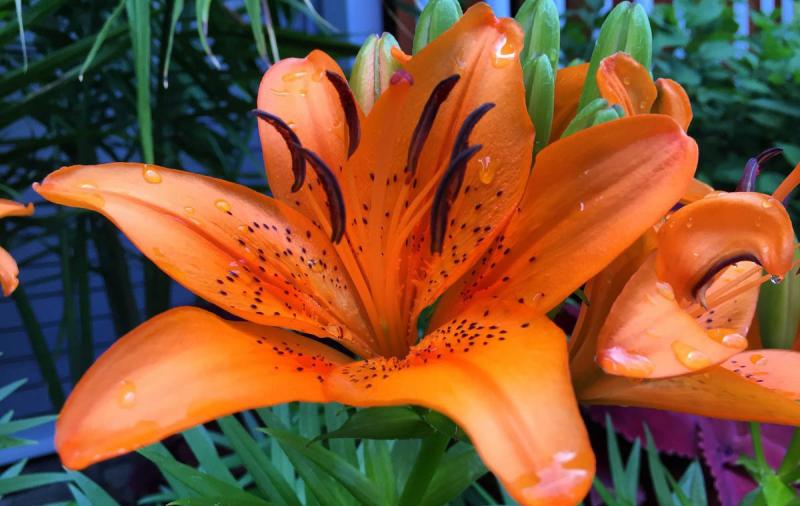
Tiger Lilies
Tiger lilies are an old favorite type of lily. These lilies do not grow as tall as these other lilies but they are still wonderful, usually long-lived additions to the garden. Flowers are usually orange with lots of spotting but not much fragrance. Even if you just plant a few bulbs, they will usually form a fairly large cluster of plants in a few years, partly because of the interesting way that these lilies reproduce – by developing tiny little bulbils in the axils of the leaves. These miniature bulbs will fall to the ground and start to grow, soon producing a flowering sized plant.
Care & Management
All of these lilies should be grown in a location that will receive full sun to part shade and in soils that are well-drained. If you are planting lily plants, wait until temperatures warm up in the spring because the lily foliage will be tender, coming from a warm greenhouse. If you are planting your lilies from bulbs, you can plant them as soon as the soil in your garden has warmed up and dried out in the spring so you can work in it. Be careful of the tender shoot, that you will probably see already beginning to grow at the top of the bulb. If you break it off, it will really stunt the bulb if it has to try to produce a new stem. Dig the hole large enough so that when you place the bulb in the hole and you can spread out the roots a bit. Dig it deeply enough so that you and have about 4” of space between the top of the bulb and the soil surface. Carefully fill in the hole, protecting the developing shoot. Lilies look best when planted in groups of at least 3-5 bulbs. Larger groups are even more spectacular.
Protection from the wind is also advisable for some of the taller growing types like the Trumpet and O/T hybrids that can reach 5-7’ in height. You can also stake them or provide other support for them. Lilies also make excellent cut flowers, lasting for a week or more in a vase. After the flowers fade, cut off the old branched flower stems, just above the top leaves on the lily stems. Allow the lily plants to continue to grow the rest of the summer, until they freeze in the fall. Then cut the stems down close to the ground.


